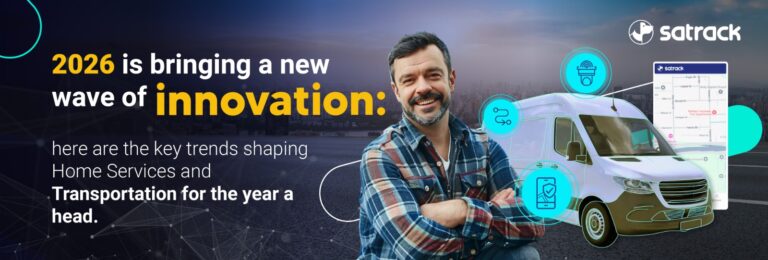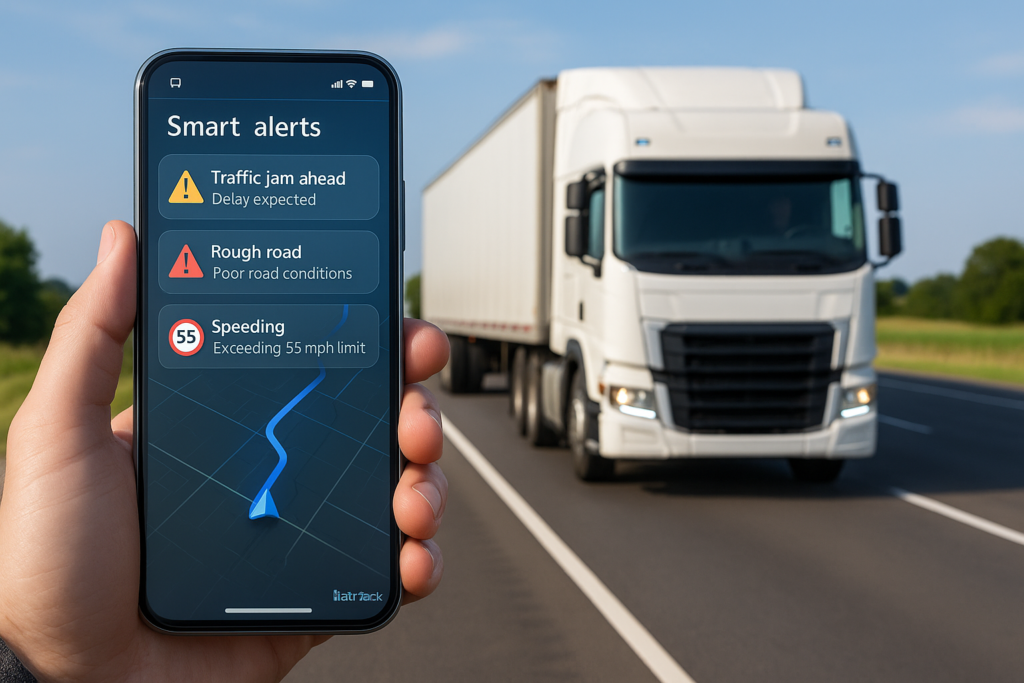

Imagine if your fleet could talk to you. Not just to tell you when a truck moved or stopped, but to warn you in real time if a driver is tired, distracted, or driving unsafely. That’s no longer science fiction. AI-powered smart alerts are transforming how companies care for their drivers and reduce road accidents.
In this article, we’ll explain what these alerts are, how they work, and why they’re a key tool for safer drivers and more efficient operations.
AI smart alerts are systems that analyze driver behavior in real time. They use technology such as cameras, sensors, and machine learning algorithms to detect risks like:
When a risky behavior is detected, the system triggers an audible or visual alert for the driver, and—if configured—also notifies the fleet manager.
These systems combine several technologies:
Accident Reduction
The alerts act at the critical moment—right when a mistake is happening. This immediate intervention helps prevent many accidents.
Improved Driver Performance
Drivers who know they’re being monitored tend to improve their habits. Real-time alerts also help them correct mistakes instantly.
Detailed Analysis for Training
The system stores event records that can be used for training programs. This enables personalized coaching for each driver.
Lower Operating Costs
Fewer accidents mean fewer repairs, less downtime, and lower insurance costs. Safer driving also reduces fuel consumption and vehicle wear.
AI smart alerts can be integrated with GPS and fleet monitoring systems. For example, if you already use software like Satrack, these devices can be added so you receive alerts on the same platform you use to track routes and locations.
Every fleet is different. That’s why it’s important that the system allows you to adjust:
This ensures alerts don’t become annoying, but instead a helpful and precise tool.
Some companies hesitate to adopt this technology due to concerns like:
Initial cost: While there’s an upfront investment, savings from fewer accidents and less fuel use often offset it in a few months.
Driver resistance: It’s important to communicate that the goal is to protect them, not to spy on them. Involving them early helps reduce resistance.
Alert fatigue: That’s why proper configuration is key to avoid false positives or excessive alerts.
As technology advances, smart alerts will continue to improve. Soon, they’ll be able to predict behavior before it happens, analyze surroundings more accurately, and learn from every trip to become even more effective.
Investing in AI smart alerts isn’t just a tech upgrade—it’s a commitment to protecting lives. Safer drivers mean safer teams, cargo, and reputations.
If your fleet isn’t using this technology yet, now is the time to explore how it works and how it can fit into your operations. Artificial intelligence isn’t the future—it’s already here, helping you drive smarter and safer.
